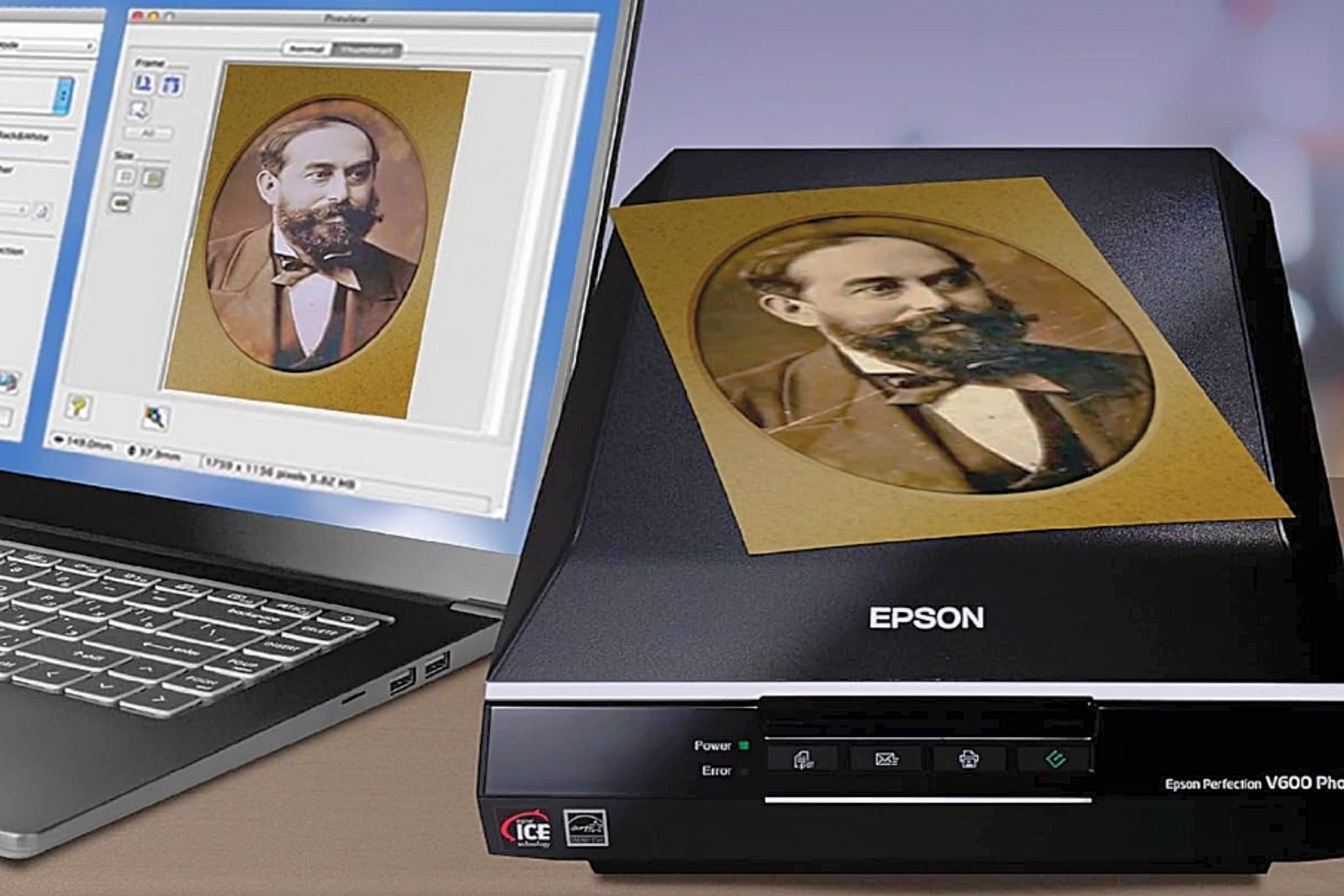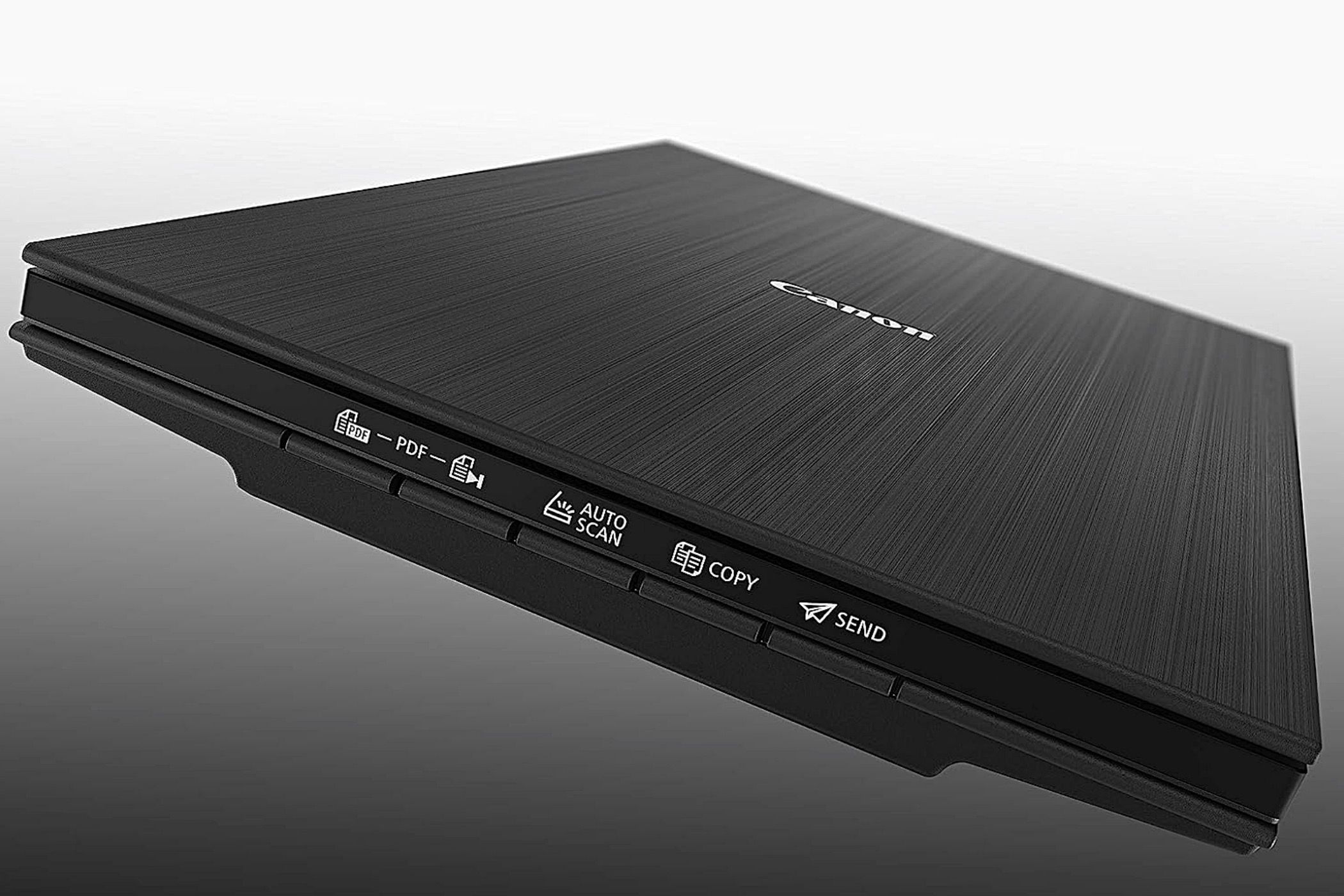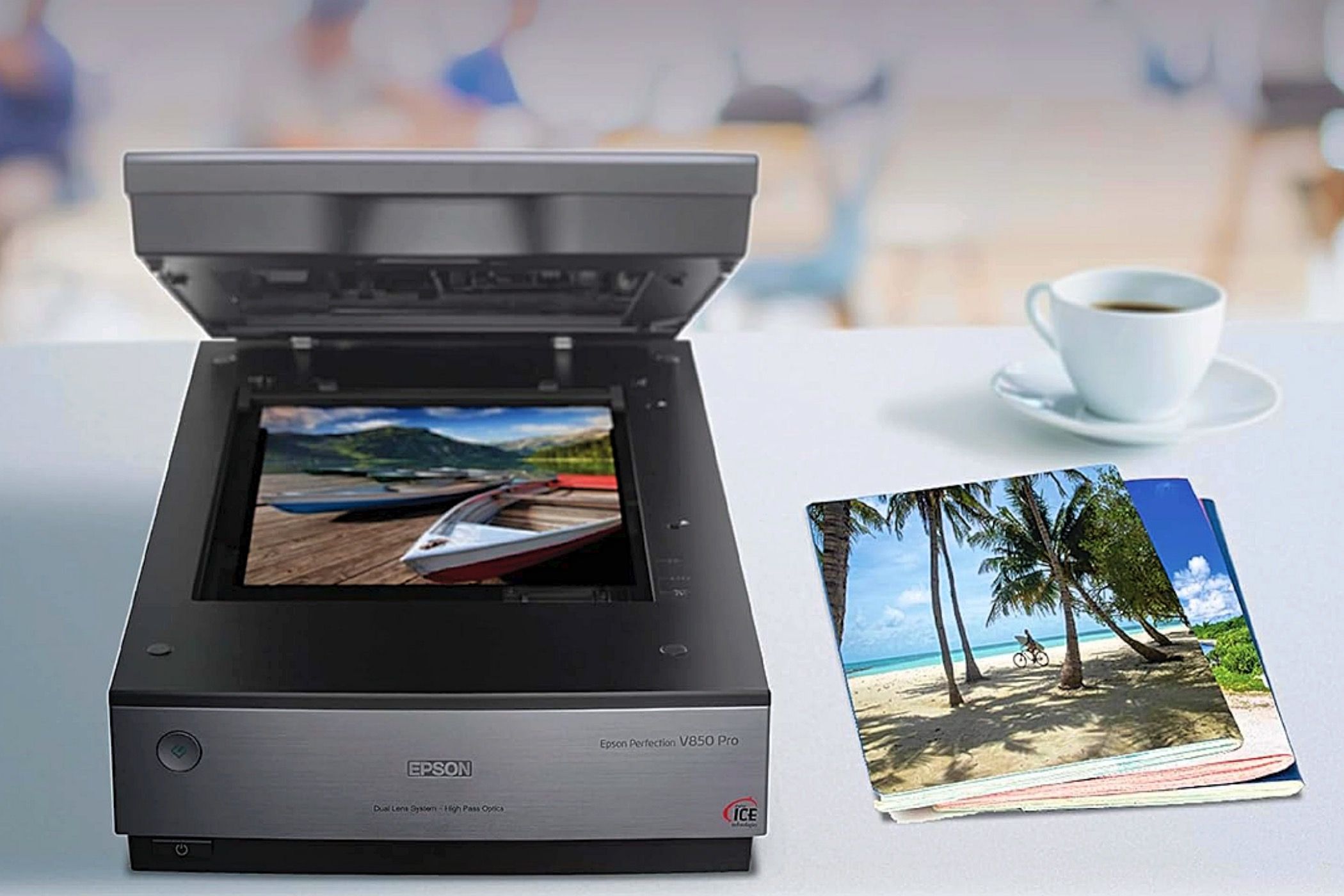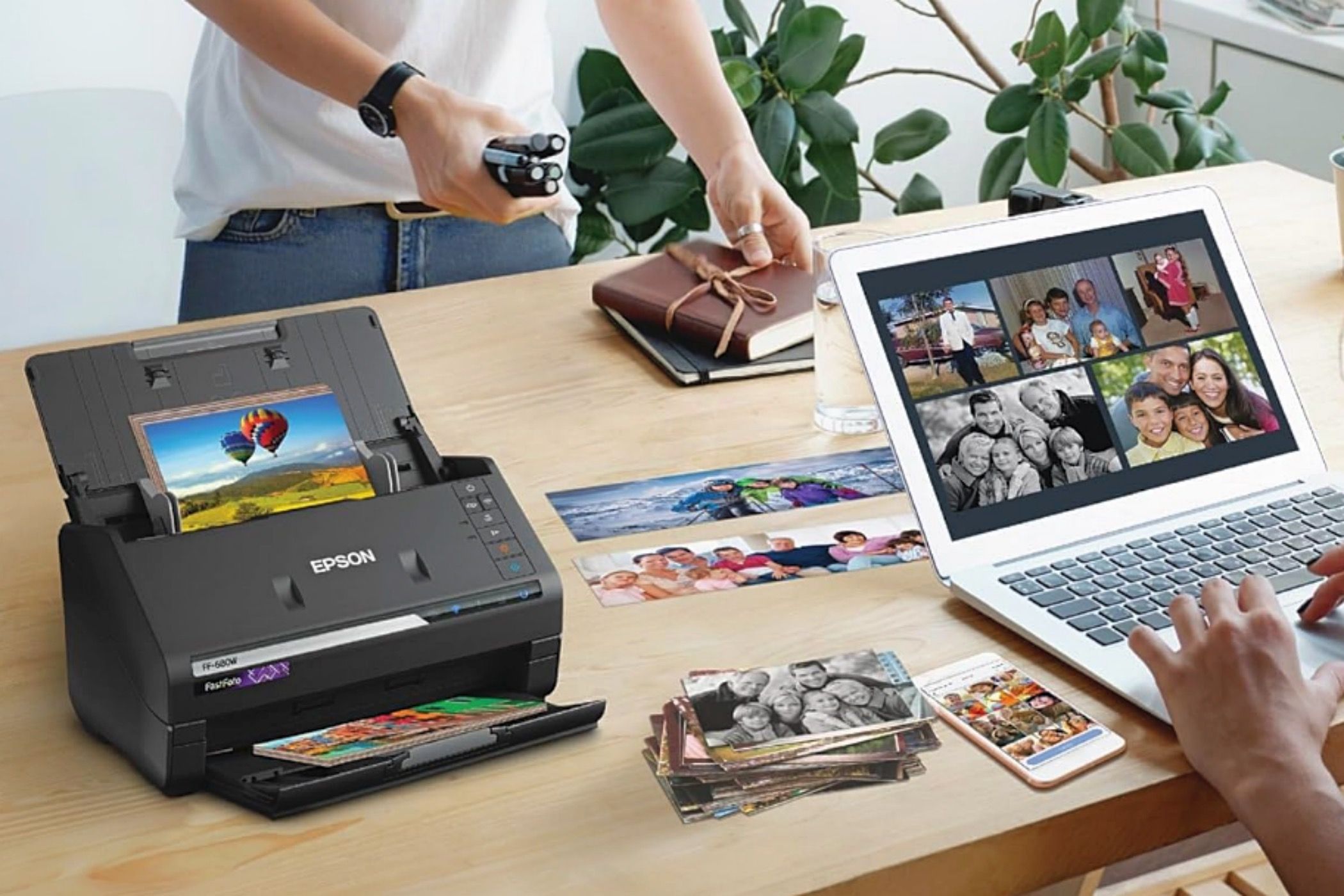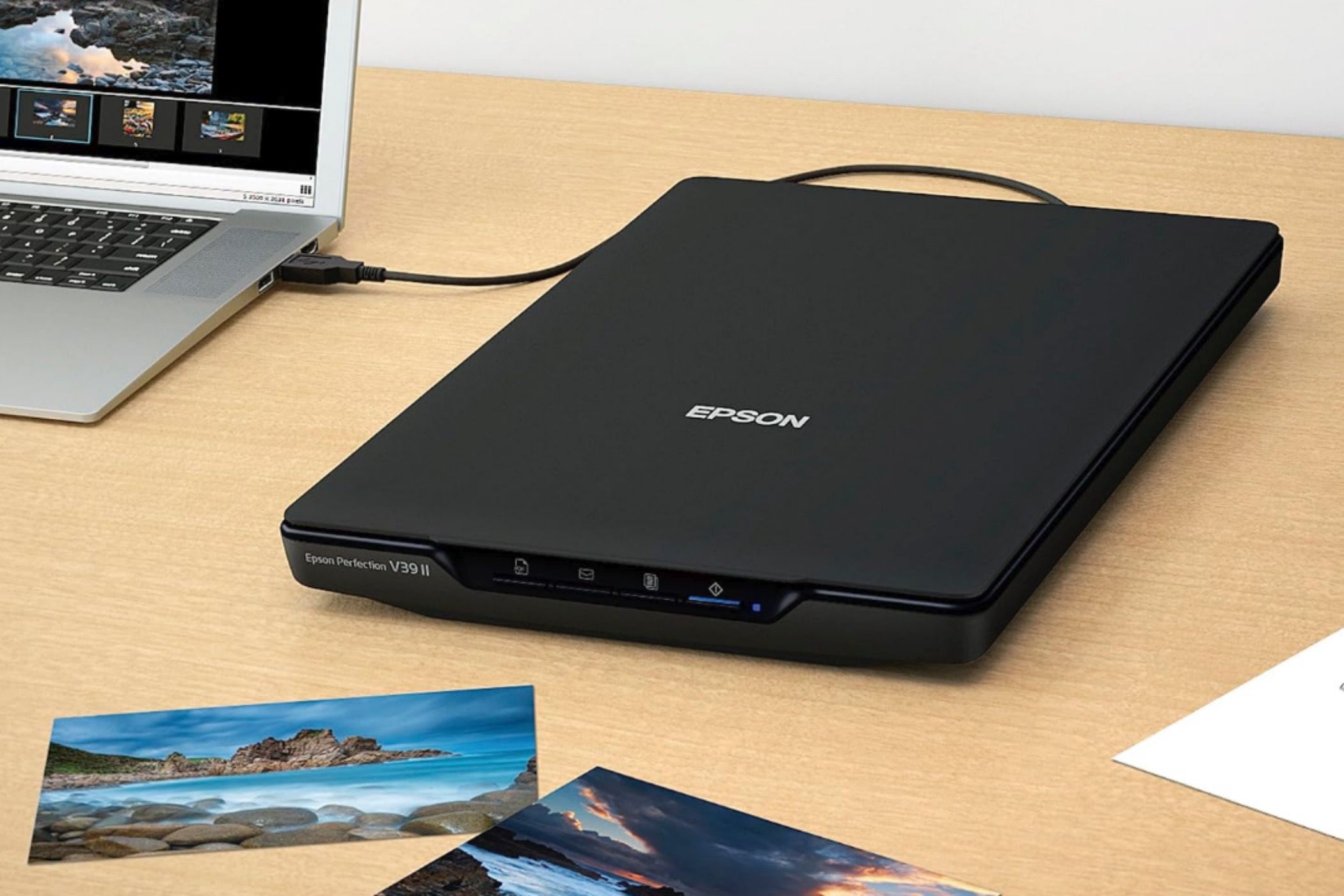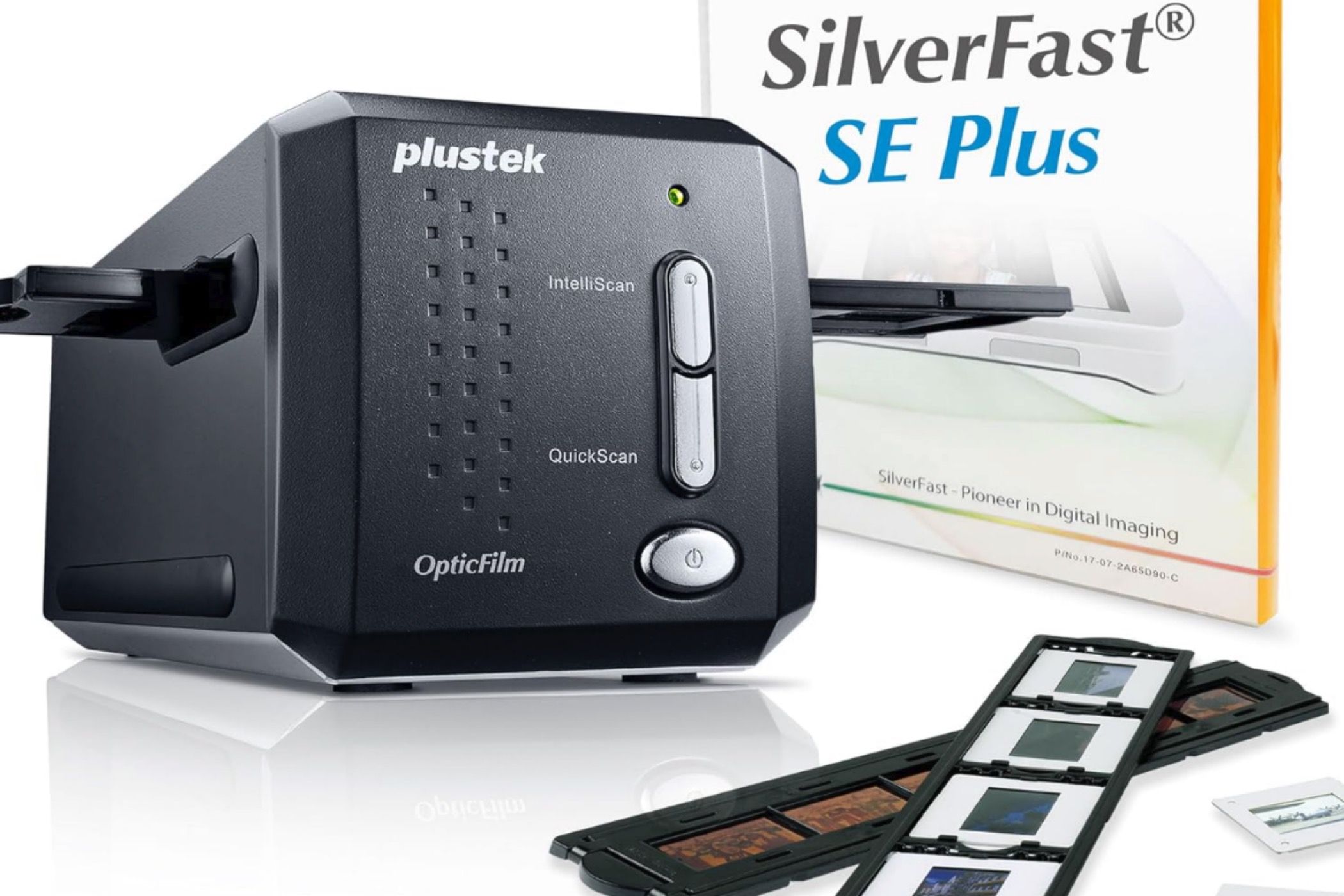While physical photos will fade and tear over time, a scanned image can be safely enhanced and stored online forever. This ensures your whole family and subsequent generations can all share their memories and history.
How to Choose the Right Photo Scanner for You
A photo scanner is a device you can use to digitize your old family albums. By converting these old pictures, you can preserve them and ensure they last forever. You can also edit or enhance them with software and scanner features and share them on social media. Some photo scanners can even convert old negatives and slides to digital formats, meaning you don’t even need to print them in the first place.
But even though we are now engulfed in the digital age, there are still boxes and boxes of old photos stashed away in closets and basements, crying out for digitization. These photos will fade over time or become damaged. If you don’t digitize them, they could be lost forever. But, as straightforward as it may sound, there are crucial factors to consider before buying a photo scanner.
There are a few types to consider first and foremost. A flatbed is the most common type and probably the style you first think of. As the name suggests, they are slim and have a flat surface for you to place your photo. You can use a flatbed photo scanner for scanning printed photos, documents, and sometimes film negatives. They generally offer high resolutions and color accuracy.
However, if you have a lot of photos, using a flatbed photo scanner can be time-consuming. A sheet-fed scanner, on the other hand, pulls photos through automatically and scans each image at a much faster rate. However, they might not be as gentle as you would like with old, fragile pictures, and another trade-off is a loss in image quality. But this loss is usually acceptable for most, especially if you don’t plan on enlarging your pictures to significant sizes.
You also have handheld photo scanners, which are portable and convenient but less precise, while you can even use your smartphone for basic photo scanning needs.
From affordable options to premium picks, there is an extensive range of photo scanners to choose from. We’ve whittled the choice down to some of the best selections for specific categories.
|
How Did We Research |
||
|
Models Evaluated |
Hours Researched |
Reviews Analyzed |
|
21 |
6 |
18 |
How-To Geek’s product recommendations come from the same team of experts that have helped people fix their gadgets over one billion times. We only recommend the best products based on our research and expertise. We never accept payment to endorse or review a product.
Read More »
|
Pros |
Cons |
|---|---|
|
Good features for photo restoration |
No wireless connection |
|
Good value |
Slower scanning at high resolutions |
|
High optical resolution |
Software is a bit awkward at times |
|
Vibrant colors and sharp details |
|
|
No warm-up time |
The Epson Perfection V600 offers an excellent balance of versatility, performance, and value and is regarded as a top choice for general photo scanning needs. It’s a flatbed scanner that can handle various image formats, including photos, film negatives, slides, and documents.
Weighing in at 9lbs, the V600 is light enough to move from room to room, although, if you’re concerned about desk space, it is pretty large at 11 x 19 x 4.6 inches. However, with an optical resolution of 6,400 DPI, it produces detailed scans of photos, negatives, and slides with images barely distinguishable from more premium machines. It can also boast a 12,800 DPI interpolated resolution, which is an artificially software-enhanced sharpness.
With a 48-bit color depth and 16-bit grayscale, the Epson Perfection V600 produces a vibrant range of colors and detailed black-and-white images. It can also scan reasonably quickly at standard and lower resolutions. But when it comes to the higher end, it scans considerably slower.
File sizes are also large at high resolutions. But such resolutions may not be necessary if you’re just looking to share photos on social media. Platforms such as Facebook and Instagram compress images to save on bandwidth and storage, leaving snaps with high resolutions somewhat redundant. However, you can simply scan at lower resolutions and utilize the higher definition for detailed archiving, printing, and editing.
The Epson Scratch software is sufficient, if a little cumbersome at times. It features a dust-removal function that also eliminates scratches, tears, and creases from both film and photo prints. Another handy feature is the Epson Easy Photo Fix, which can restore faded colors back to their former glory. The software is fine for basic scanning needs and offers different modes for different users, from automatic to professional, although advanced editors will likely require extra external software.
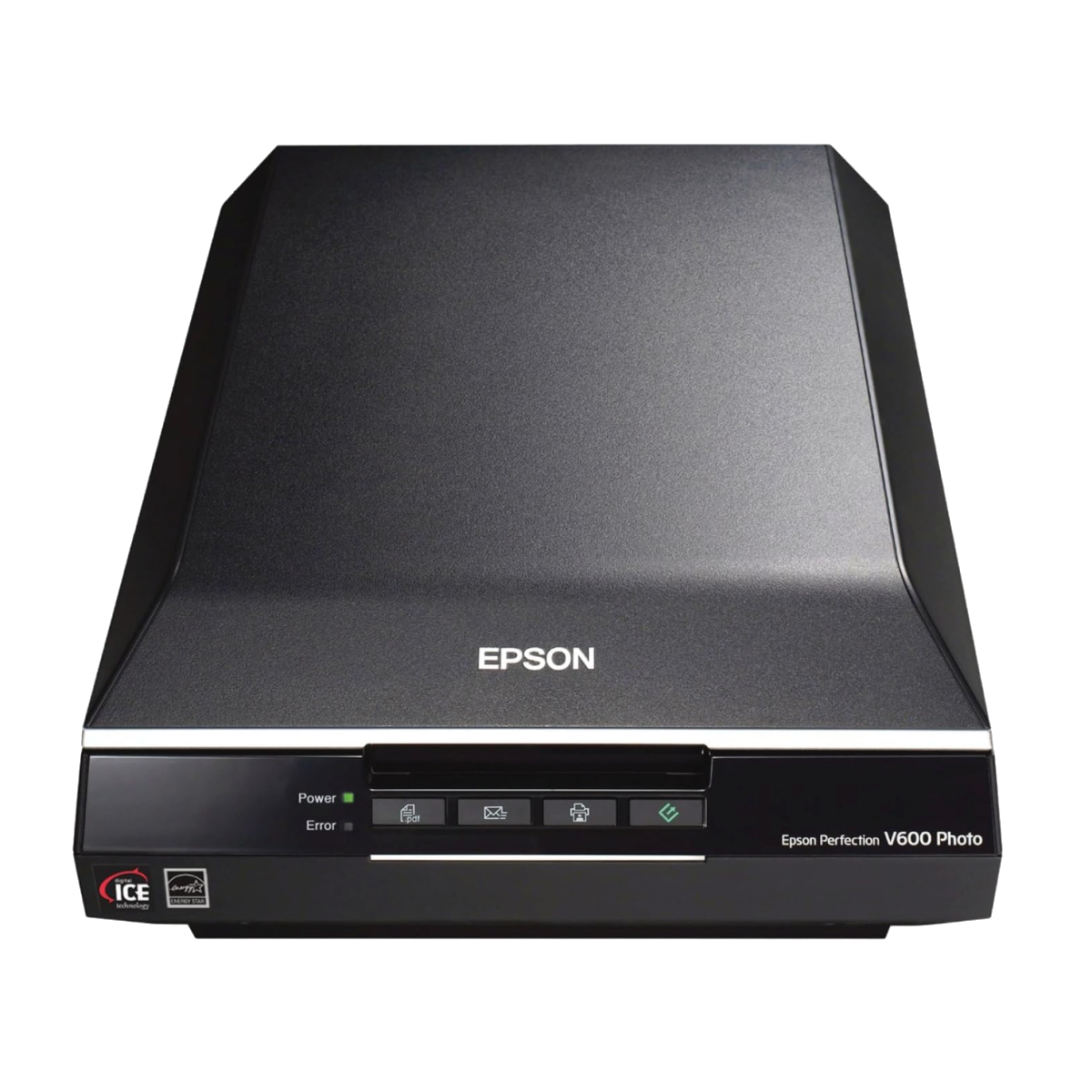

Best Photo Scanner Overall
Epson Perfection V600
The versatile Epson Perfection V600 offers excellent value with its high optical resolution, delivering vibrant colors and precise detail from a variety of formats.
| Pros | Cons |
|---|---|
| Integrates with TWAIN-compliant programs | No wireless connectivity |
| Good image quality | No mobile support |
| Color restoration and dust removal features | |
| Portable and lightweight | |
| Budget-friendly |
With a compact size and lightweight design, the
Canon CanoScan LiDE 400
is a good option for those seeking portability without much of a quality compromise. At 14.5 x 9.9 x 1.7 inches and with a weight of just 3.6lbs, it’s easy to store and transport. And, this portability is further enhanced by its USB-C connection, which eliminates the need to carry a power brick around.Yet, portability is not all that this machine entices with. It’s also a very affordable option and easily offers the best value in town for a flatbed scanner. This value hits home when you consider its high-res prints of up to 4,800 DPI. It may not achieve professional-level clarity, but for the price, you do get 48-bit color depth that delivers vibrant and sharp color scans as well as high-quality grayscale imaging. The speed is surprisingly swift, too; you can complete a single 4×6 photo in just four seconds at 300 DPI.What’s more, the CanoScan LiDE 400 comes with the user-friendly IJ Scan Utility software. It’s ideal for general scanning needs and is easy to navigate, no matter your experience level. The scanner is also compatible with TWAIN-compliant programs such as Adobe Photoshop, allowing for direct scanning into these applications.It works with Windows, Mac, and Linux. However, some features are limited or unavailable on the latter two. Furthermore, the scanner has no mobile support, meaning there is no app for smartphone or tablet integration. You also cannot operate the machine wirelessly via Bluetooth or Wi-Fi. But, if you value desktop space, a handy kickstand allows for upright scanning and storing.
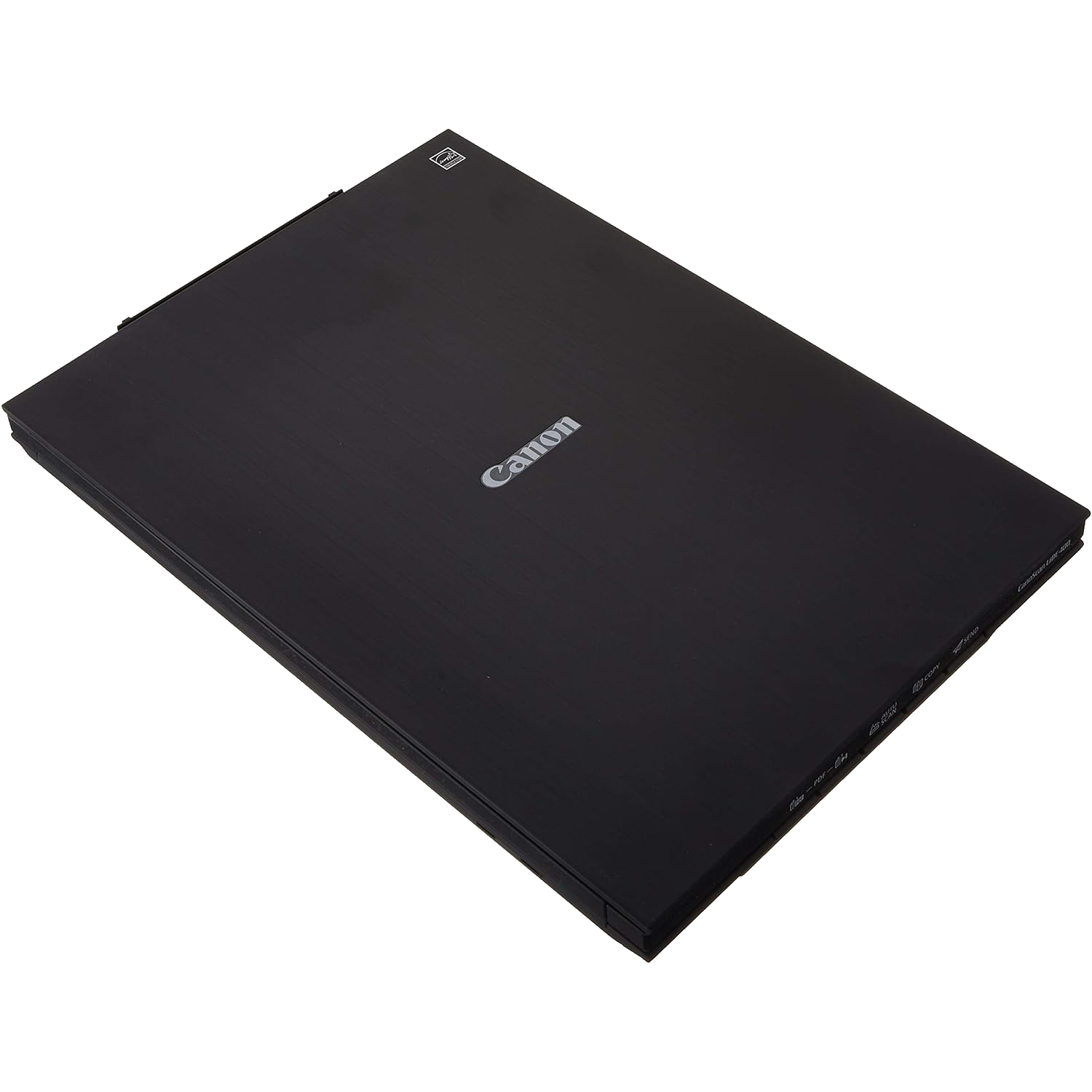

Best Budget Photo Scanner
Canon CanoScan LiDE 400
$78 $90 Save $12
The affordable Canon CanoScan LiDE 400 shines as a no-frills flatbed scanner. It scans reasonably fast, has a touchscreen, and supports USB Type-C.
|
Pros |
Cons |
|---|---|
|
Fast scanning |
Takes up substantial desk space |
|
Includes multiple sets of film holders |
Relatively heavy |
|
Durable build |
Very expensive |
|
Exceptional image quality |
|
|
Pro-grade software |
If you seek a top-of-the-line option for excellent image quality and professional features, the Epson Perfection V850 Pro checks all the boxes. But, this flatbed scanner offers high-res photo scanning only, so if you need a machine for uploading old photos to Instagram, this one is overkill for sure.
However, it is ideal for professional photographers looking to digitize large volumes of film while maintaining the highest possible fidelity. It’s also an excellent choice for organizations preserving historical photographs and artists or designers who require precise scans of their work.
The Epson Dual Lens System provides options for 4,800 and 6,400 DPI scans with a maximum interpolated resolution of 12,800 DPI. With 48-bit color depth and 16-bit grayscale, you get precise color rendering and excellent dynamic range. With a Dmax rating of 4.0, you also get a high-quality tonal range with smooth gradations and meticulous shadow detail. However, as excellent as the scan quality is, there may not be too much to pick between the V850 and our best overall pick, the V600, to justify the gulf in price.
However, the V850 does scan faster at 10.8ms per line compared to the V600’s 21ms. This makes it the better choice for bulk scanning. This speed is, of course, reduced when using features such as infrared dust removal, which is essential for professional-quality prints.
The V850 is bundled with more sophisticated software, too. While the Epson Scan software is user-friendly and sufficient for most scanning needs, the SilverFast SE Plus 8 offers more pro-level control, and the X-Rite i1 provides calibration information for setting precise levels of color accuracy.
At 12.1 x 19.8 x 6 inches, it’s bulkier than the V600 and also considerably heavier at 14.6lbs. It takes up substantial desk space, and it is much less portable. However, it does by far have the more durable build.
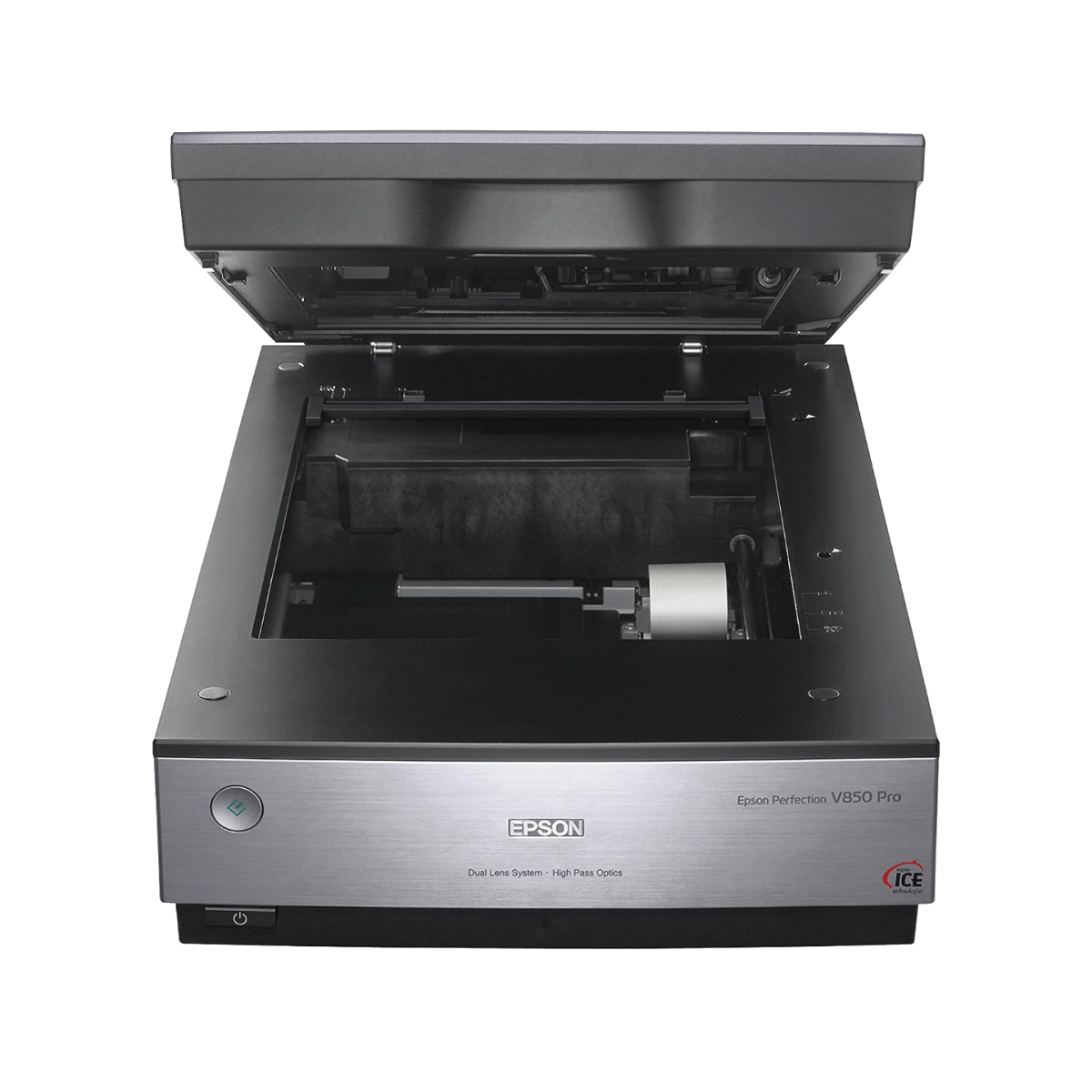

Best Premium Photo Scanner
Epson Perfection V850
The Epson Perfection V850 is a premium photo scanner with premium performance. Its high-quality and speedy scanning complements the durable build and professional software. It may be overkill for regular photo scanning, but for professionals, it could be just the ticket.
|
Pros |
Cons |
|---|---|
|
Very fast and convenient |
A little overpriced for casual users |
|
Good scan quality |
|
|
Compact size and portable |
|
|
Intuitive software |
|
|
Wi-Fi and USB connectivity |
If you have boxloads of photos you want to digitize as quickly as possible, you need a fast machine for bulk scanning. You may compromise somewhat on image quality, but for this purpose, a device like the Epson FastFoto FF-680W offers sufficient quality at far more tolerable speeds.
It’s a sheet-fed scanner, which means you can stack a bunch of photos and literally hit go. The FF-680W can scan a single image at its highest resolution in just over one second. It scans at up to 600 DPI (1,200 interpolated), which may seem considerably lower than the Epson Perfection flatbed models, but it’s good enough for capturing details and even allows for some enlargement.
The 24-bit color depth is standard, and the scanner comes with the intuitive FastFoto software. It can automatically rotate, crop, enhance colors, reduce red-eye and so on, and it saves both the original scan as well as the edited version.
Wi-Fi connectivity is a welcome convenience, and the device is compatible with both Windows and Mac. It’s also compact in size at 11.7 x 6.7 x 6.9 inches, and, at 8.2lbs, it is still relatively portable. However, it may be hard to justify the price tag if you are just a casual photo scanner without huge backlogs to digitize. But if speedy bulk scanning is your requirement, this is your machine.
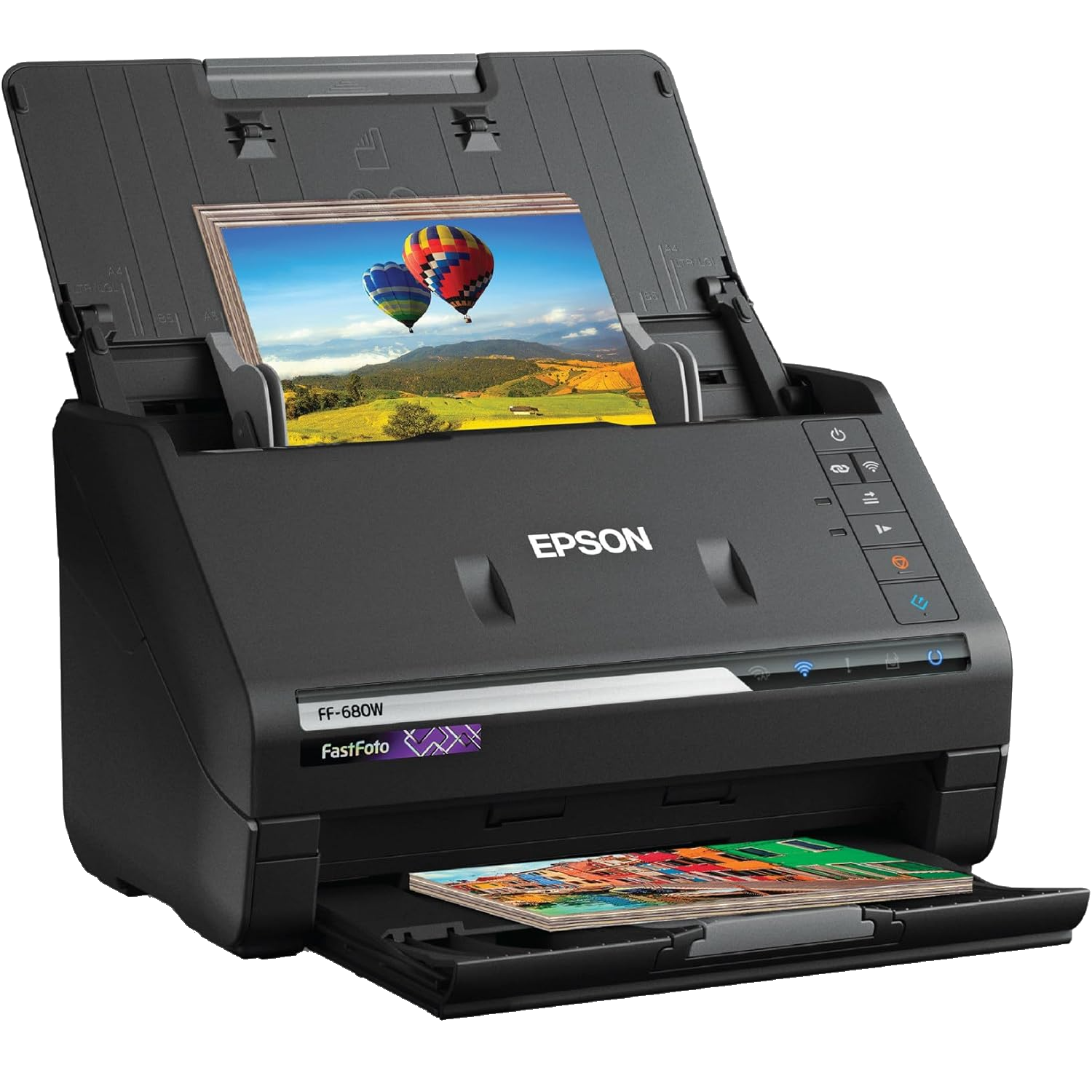

Best Photo Screen for Bulk Scanning
Epson FastFoto FF-680W
Digitize your photo prints with Epson’s FastFoto FF-680W, which can scan up to 35 photos in 35 seconds. It also has auto enhancement, cloud services, and OCR software.
|
Pros |
Cons |
|---|---|
|
Budget-friendly |
Mac users need to download drivers |
|
Compact, lightweight, and portable for a flatbed |
Slow high-res scans |
|
Removable lid |
|
|
High-res scanning |
|
|
Built-in kickstand |
The Epson Perfection V39 II is a perfectly priced flatbed scanner for anyone who just needs some basic photo digitization. It has a high-rise, removable lid that allows you to scan photo albums and other thick items, and it provides first-rate image clarity and detail with its 4,800 DPI optical resolution. It’s also relatively fast for the price point and can scan an 8.5 x 11-inch photo in around 16 seconds at the default resolution. However, at higher resolutions, it understandably slows down.
For a flatbed scanner, it’s compact and slimline at 14.5 x 10 inches and 1.5 inches in height. It also has a built-in kickstand if you want to place the scanner vertically if you are pushed for desktop space. Additionally, it is lightweight at just 3.1lbs, making it a very portable option. It can easily slip into a bag or sit comfortably in the back seat of a car. And as it is USB-powered, it doesn’t require an AC adapter, which adds to its portability.
There are two software packages included with the scanner. The first is Epson ScanSmart. This is the more beginner-friendly software with automated features. You can stitch oversized images together, send them to the cloud, and perform basic photo editing such as red-eye removal and faded-color enhancement. The Epson Scan 2 software is the more advanced option and features more manual controls. Among its functions is an Optical Character Recognition (OCR) function that allows you to create editable PowerPoint files, among other formats.
It’s compatible with Windows and natively supports older MacBooks with ARM and Intel processors. However, for M1-based Mac models and later, you’ll need to download the necessary drivers from the Epson website.
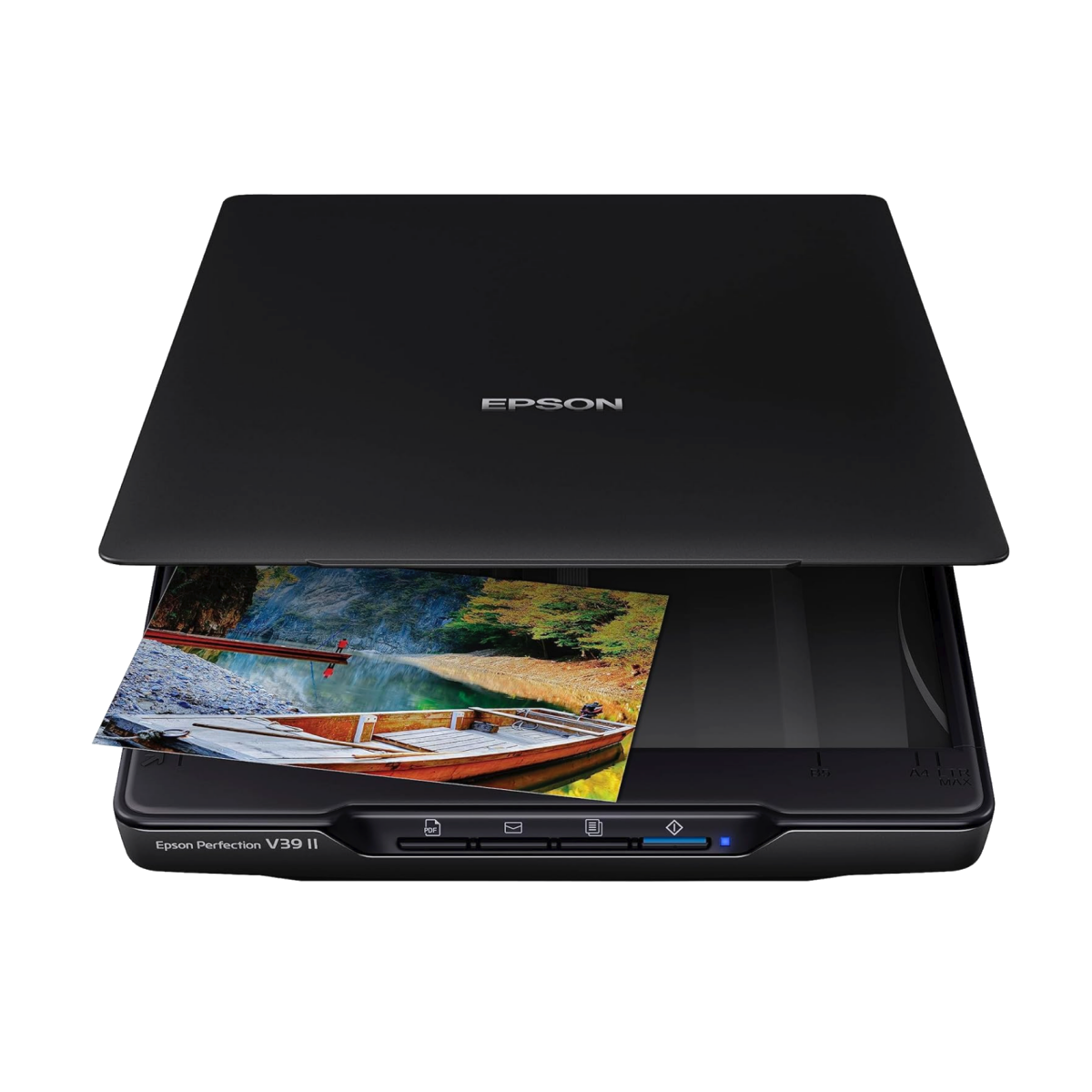

Best Portable Photo Scanner
Epson Perfection V39 II
$108 $120 Save $12
The Epson V39 II is a portable photo-scanner option suitable for anyone seeking bang for their buck. It has a high resolution and delivers quality photo scans, and there are plenty of entry-level possibilities to edit your old images.
|
Pros |
Cons |
|---|---|
|
Compact and lightweight |
No batch scanning |
|
Hardware-based infrared dust and scratch removal |
Little automation in the software |
|
Film holders keep negatives flat and secure |
|
|
3.6D dynamic range with multi-exposure feature |
|
|
Sturdy construction with padded carrying case |
Anyone who works with or has a collection of negatives or slides will benefit from a dedicated scanner for film like the Plustek Opticfilm 8200i SE. With this scanner’s maximum resolution of 7,200 DPI, you can convert those negatives and slides into high-quality digital images. Additionally, a resolution this high also makes it an ideal choice for blowing your pictures up into intricately detailed large prints.
However, scanning speeds can be prolonged, especially when you use prized functions, such as its infrared dust removal and multi-exposure features. At the highest resolution, with either of these enabled, you’re looking at more than ten minutes for a scan. But, this is the trade-off when you prioritize professional-grade quality.
Image details are comparable to more premium scanners, and with a dynamic range of up to 3.6D, you are assured of excellent detail in both shadows and highlights. Furthermore, with 24- and 48-bit output options, you get precise color accuracy and saturation with a smooth range of tones. This is especially evident when scanning in TIFF or RAW DNG formats. However, its SilverFast SE Plus 9 software, while powerful and advanced, has a learning curve that can be steep for novices. But investing the time comes with the reward of pristine scans.
It’s a dedicated sheet-bed scanner with a compact (10.7 x 4.7 x 4.7 inches) and lightweight (3.5lbs) design that’s easy to transport and store. It also comes with a padded carrying case for added protection when on the go. However, you should note that it scans 35mm film and slides only, so if you’re looking for larger film format support, you are out of luck here.
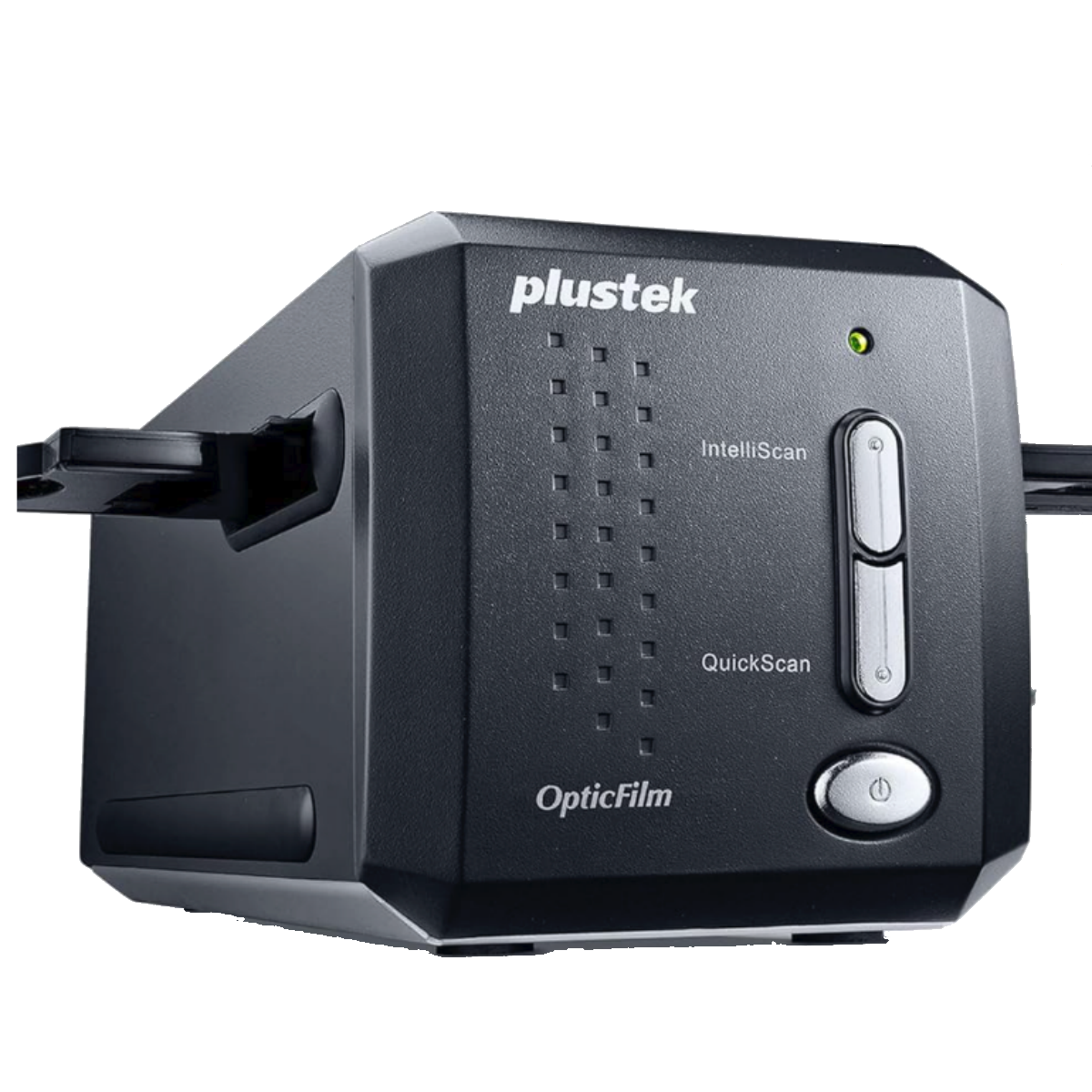

Best Film Scanner
Plustek Opticfilm 8200i SE
The Plustek Opticfilm 8200i SE is a top-quality film scanner with a high 7,200dpi resolution that delivers excellent quality even when making larger prints.
FAQ
Are photo scanners better than printer scanners?
For scanning photos, you’re better off with a dedicated photo scanner. They typically have higher resolutions and better dynamic range for producing superior-quality images. A dedicated photo scanner also has dedicated photo scanning features, such as dust and scratch removal, color restoration, and specialized software for photo editing. Additionally, they often have features to scan negatives or slides, which is something printer scanners don’t have.
Printers with scanners and other features are often referred to as an all-in-one (AIO) printer or a multifunction printer (MFP). They can be a good choice if you’re just an occasional photo scanner or if you often scan other document types and print hard copies. If high-res photo scanning isn’t a priority and budget is also a concern, an AIO printer may be the better choice. So, before buying any kind of scanner, it is best to find the right one for your needs.
What is the best scanning resolution for scanning older photos?
Scanning older photos between 300 and 600 DPI is usually sufficient. The former is generally enough for quality digital images and standard prints. This resolution can capture ample detail and is a good balance between quality and file size. If your photos have fine details or if you plan on enlarging the image, 600 DPI should be sufficient. For slides and film negatives, or if your photos are very small, you might want to consider a higher resolution than 600 DPI.
However, the higher the resolution, the bigger the file size and the longer the scanning time. But, professionals such as graphic designers, photographers, and historians who archive old photos need these large resolutions. But even the casual scanner who prints significantly enlarged copies or is looking for detailed restorations of old or damaged photos should consider higher resolutions.
What is DPI and why does it matter for scanning?
DPI (dots per inch) is the resolution measurement of a scanned image. It tells you how many individual dots fit into a one-inch line of an image.
It matters because a higher DPI means more dots per inch, which results in a higher resolution and, therefore, better image quality. The more DPI, the better the detail in your photos. However, the higher the resolution, the higher the file size and the longer the scan time.
A high DPI (over 600) is often necessary for professional scans and enlargements. But if you’re just sharing images online or storing and viewing them on your computer, lower DPIs are fine.
What is a film scanner?
A film scanner is used for converting negatives or slides into various digital formats. Film scanners typically offer higher resolutions than all-in-one printers and deliver sharper images with finer details.
They have features specifically designed for handling negatives or slides, such as film holders for various formats, dust and scratch removal tools, and color correction for faded negatives.
Regular photo scanners often feature film scanning, or you can opt for one of the many dedicated film scanners like the excellent Plustek Opticfilm 8200i SE.


